Your email database is not a leads database.
Okay, yes, your email database probably has a lot of leads in it. But that's not the sole type of contact you have, nor the sole type of contact you should have. Over time, you will naturally acquire a variety of contact types within your database, and you need to know who is who, and what message you should send to each type.
This post will break down the 6 types of subscribers you may already have in your contacts database, following the stages of a typical sales and marketing funnel. Think about your business and your sales and marketing funnel to identify which types you have right now, and whether you're emailing them with the appropriate types of email marketing content.
Subscriber
A regular subscriber is the most basic type of contact you will have in your database. This is someone who has simply opted into your email communications, but you don't yet know much more about them, or how interested they are in your company.
What do you send subscribers?
Your priority is to send them something of value to encourage them to give you more information about themselves in exchange. For example, we will send our latest educational ebook to our subscriber base so that they will fill out a conversion form and tell us their business, role, etc. From there, we can tell which type of subscriber they truly are and send them more relevant content.
Example: Learning SEO From the Experts, Top Ebook Offer
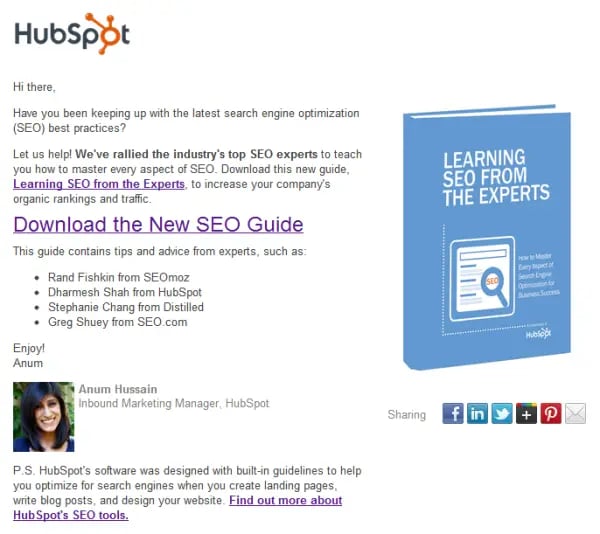
One of the emails we send to new subscribers is our Learning SEO From the Experts Ebook. This is one of our top offers in terms of downloads and previous email clickthrough rates. It's a great top-of-the-funnel offer for a subscriber who isn't yet ready for a demo or trial, because it's an educational piece of content that's been proven to resonate with other TOFU subscribers in the past. And since these are subscribers, they probably haven't seen or downloaded any (or many) of your ebooks -- unless they just happened to stumble across one while browsing your site -- so take a look at your "best hits" and send those offers to this segment.
Lead
A lead is someone who has filled out a conversion form on your site and may be a potential customer for you.
What do you send leads?
You already know a bit about this person, so you're more able to tailor your follow-up based on their interests with something that's relevant to them. This is someone who is a potential customer but is only at the research phase, having downloaded some educational content from your site. Your goal, then, is to move them further down the sales and marketing funnel to make them more qualified for your sales team. Taking your goal and their interests, you can craft emails that combine content aligned with their interests (e.g. a case study on someone having success with social media marketing) along with calls-to-action aligned with your goals (e.g. a consultation with a specialist).
Example: Social Media Customer Success Story
.webp?width=600&height=804&name=What%20to%20send_2%20(1).webp)
For leads that download social media related content, we might send a customer case study focused on social media. This example details HubSpot customer FireRock's success using HubSpot and social media to increase their reach by 330%, website visits by 189%, and lead generation by 137%. The email ends with a call-to-action to sign up for a live assessment with one of our inbound marketing specialists.
Qualified Lead (MQL or SAL)
Leads that have met some qualification criteria can move to a stage of Marketing Qualified Lead (MQL) or Sales Accepted Lead (SAL). The qualification criteria are up to you, but essentially this is someone who is a *good* potential customer, and someone who warrants a sales follow-up.
What do you send qualified leads?
It depends, because now is the time to facilitate the handoff from marketing to sales. It's best to reinforce the call-to-action of talking to the appropriate sales rep, while giving this lead content that is still valuable to them, but more aligned with your product benefits. If you need help coming up with product marketing content, take a look at this blog post that outlines all of the different types you could create to send your MQLs and SALs.
Opportunity
An opportunity is someone who has successfully connected with a sales rep and is in a conversation that's working towards purchasing your product or service.
What do you send opportunities?
At this stage in particular, marketing is supporting the sales process. That may mean *not* sending content separately from the sales team, but rather, arming the sales team with the content their opportunities may request. This content includes case studies and product collateral and any very bottom-of-the-funnel content. Again, visit this blog post, "13 Types of Product Content Sales Needs to Close More Deals" if you're short on this type of content.
Customer
The customer stage is what we're all working toward -- having someone actually purchase your company's product or service and become a happy user. There is plenty of segmentation you can do among your customers: new customers, happy customers, repeat customers, etc., to better target these emails, too.
What do you send customers?
At this stage, a customer likely wants to keep learning from your educational content, but also wants to learn how specifically they can better use your product or service. Case studies are great to send for this, because they both motivate and educate your customers with product- or service-specific tie-ins.
Example: Invitation to Customer-Only Webinar Series
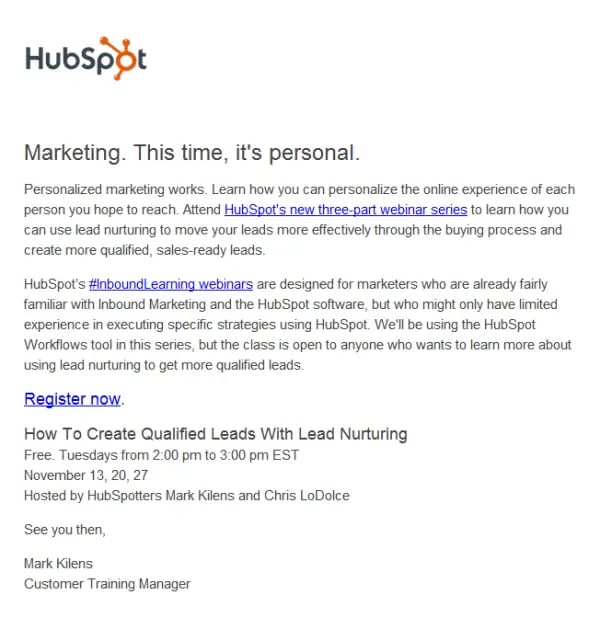
Just because someone has purchased your product doesn't mean they want to stop learning! Our customer-only webinars are incredibly popular events that allow customers to stay up to date on marketing best practices while also learning how to implement these best practices with our software. Every month we have a new series, such as this month's "How to Create Qualified Leads with Lead Nurturing" series.
Evangelist
The final -- and often underutilized -- contact type is the evangelist. Evangelists are subscribers that are not potential customers but are fans of your content. This may include press, influencers, job searchers, or even students. Evangelists are fantastic because they will download your content, share it, and possibly even write about you.
What do you send evangelists?
With evangelists, your goals are different - you want them to simply download and share your content. So, in your email communications, encourage them to do just that! Keep them in the loop about all your latest and greatest content (even consider getting them early access) and encourage them to share it with their networks. This will help grow the top of your funnel by expanding your reach and generating more subscribers.
Example: Marketing Kit - Share to Get Access!
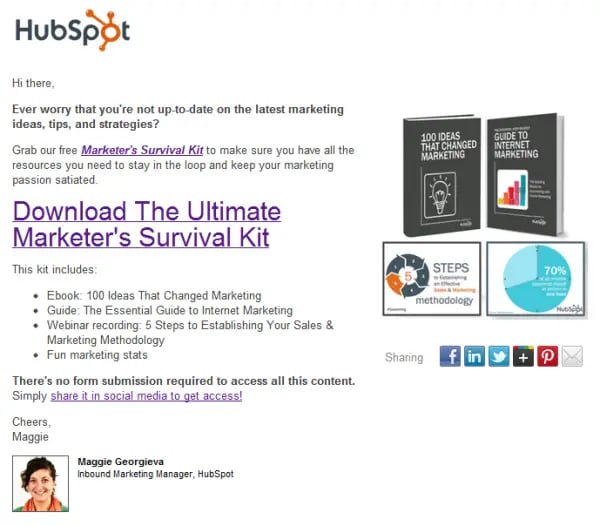
Our Marketer's Survival Kit is a new piece of content especially created for our evangelists -- marketers who love our content and love to share it. It doesn't even require you to put in your email address or other personal information, you get the kit just by sharing it in social media!
What About Competitors?
Sure, there are probably competitors lurking in your database. I hear the concern from a lot of marketers about their competitors getting their emails, reading their blogs, and getting all their super secret intelligence. In reality, this content is what helps you win -- you're out there first sharing your expertise, and engaging with your subscribers with content they care about.
You can certainly make it harder for your competitors to find your content by scrubbing for brand domains in your list building, but all it takes is for a competitor to put in their personal email address to start getting your content. Focus on creating great content for your subscribers at their relevant lifecycle stage and let your competitors always be one step behind. You'll constantly win.
Are you segmenting your database by subscriber type, or lifecycle stage?
Image credit: calixto



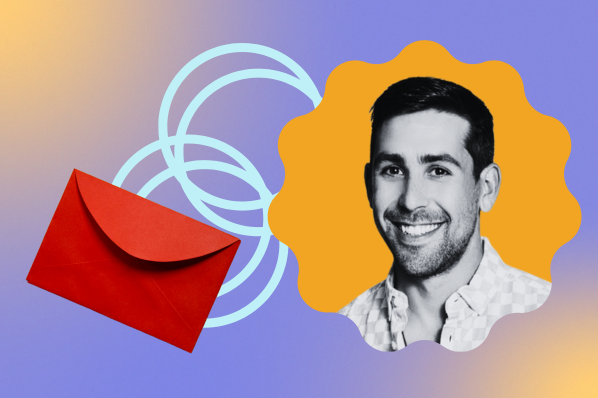
![How to Create an Email Newsletter [+ Expert Tips & Checklist]](https://www.hubspot.com/hubfs/how-to-create-email-newsletters-1-20250211-3097238.webp)


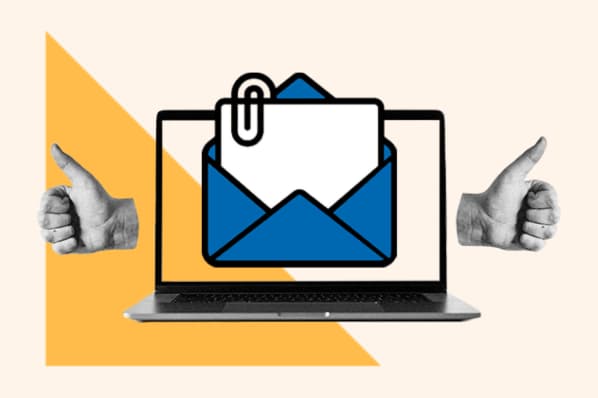
![4 Types of Emails That Get the Most Engagement According to Marketers [+4 Emails That Fail]](https://www.hubspot.com/hubfs/Untitled%20design%20%2856%29.jpg)

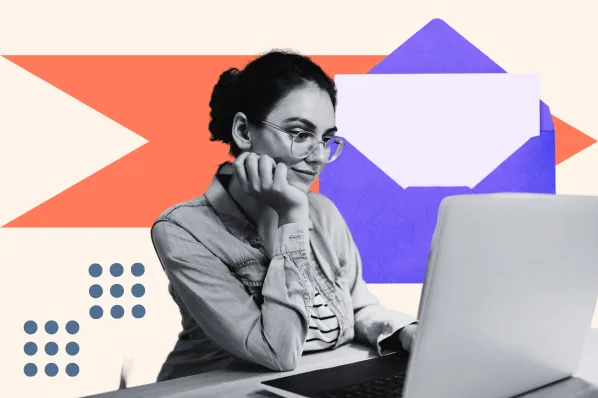
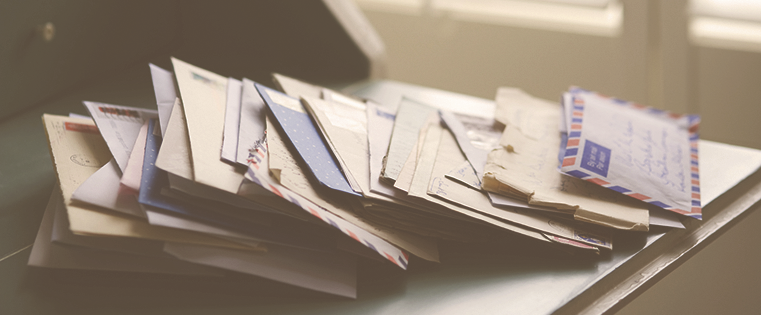
![When Do People Unsubscribe From Email Marketing Campaigns? [Infographic]](http://53.fs1.hubspotusercontent-na1.net/hubfs/53/00-Blog_Thinkstock_Images/Email_Unsubscribes.jpg)